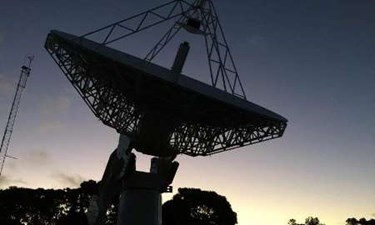Radio Telescopes Create Most Detailed Hydrogen Map Of The Milky Way
By Jof Enriquez,
Follow me on Twitter @jofenriq

Scientists have used two of the world's largest fully steerable radio telescopes to produce the most detailed hydrogen map yet of the Milky Way galaxy.
Hydrogen is the most common element in the universe, and scientists try to capture the radio waves emitted by hydrogen atoms to create comprehensive celestial maps. The most detailed yet is the one produced by an international group of scientists working for the HI4PI ("hi four pie") survey project, which combines maps created over the past decade by two radio telescopes — Parkes Observatory in Australia and the Effelsberg 100m Radio Telescope in Germany — representing the northern and southern hemispheres, to produce a full-sky density map of the neutral atomic hydrogen in the Milky Way.
The radio telescopes are twice as sensitive as previous technologies used for this purpose, and were able to collect data on clouds of hydrogen gas at four times higher resolution than previous maps. This allowed scientists to learn more about an unprecedented number of small and big structures alike within the Milky Way, and even outside it, such as the two neighboring galaxies, the Magellanic Clouds. The HI4PI survey collected more than a million individual observations and about 10 billion individual data points to produce the map.
"The result of this research is a much more comprehensive map of our galaxy that will allow scientists to better understand the Milky Way and our galactic neighbors," said D.J. Pisano, associate professor of physics and astronomy in the Eberly College of Arts and Sciences, in an article published in The Science Explorer. "This is a landmark for the field of astrophysics that will bring new insights for decades to come."
The map reveals the Milky Way's finer details, including the boundaries of super shells created by giant explosions, and shows how the cold gas in the halo at the edge of the Milky Way interacts with hot gas.
"We're seeing gas, we're seeing the interstellar medium, we're seeing the stuff which stars will later form from," Professor Lister Staveley-Smith, from the International Centre for Radio Astronomy Research (ICRAR) and based at the University of Western Australia, told ABC. "It's very important to understand the structure of gas in our own galaxy and the amount of gas in our own galaxy, its dynamics, in order that we can study the past evolution of the Milky Way and its likely future evolution."
The European Space Agency's Gaia astronomical observatory is attempting to produce a similar extensive catalog of the Milky Way. Last month, it released the most detailed 3D map yet of a billion stars in the galaxy. Just 14 months into its 5-year mission, the spacecraft already has mapped the positions and brightness of 1.142 billion stars, plus distances and motions of more than 2 million stars.
The HI4PI survey supersedes the Leiden/Argentine/Bonn Survey (LAB), which has been one of the most-used legacy datasets used to measure neutral atomic hydrogen in the past two decades, according to the group's paper published in the journal Astronomy & Astrophysics.
Staveley-Smith told ABC that only the Square Kilometre Array (SKA) telescope would produce maps of higher resolution than the HI4PI survey produced. Currently under construction, the SKA will be a collection of thousands of radio receivers and dishes spread across two sites in South Africa and Western Australia. When built, the world's largest telescope will attempt to put together the biggest map of the universe ever made.
